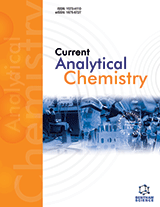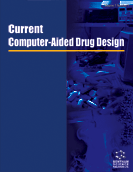Abstract
When targeting G-protein coupled receptors (GPCRs) in early stage drug discovery, or for novel targets, the type of ligand most likely to produce the desired therapeutic effect may be unknown. Therefore, it can be desirable to identify potential lead compounds from multiple categories: agonists, antagonists, and allosteric modulators. In this study, we developed a triple addition calcium flux assay using FLIPR Tetra to identify multiple ligand classes for the metabotropic glutamate receptor 3 (mGlu3), using a cell line stably co-expressing the human G-protein-coupled mGlu3 receptor, a promiscuous G-protein (Gα16), and rat Glast, a glutamate transporter. Compounds were added to the cells followed by stimulation with EC10 and then EC80 concentration of glutamate, the physiological agonist for mGlu receptors. This format produced a robust assay, facilitating the identification of agonists, positive allosteric modulators and antagonists/negative allosteric modulators. Follow up experiments were conducted to exclude false positives. Using this approach, we screened a library of approximately 800,000 compounds using FLIPR Tetra and identified viable leads for all three ligand classes. Further characterization revealed the selectivity of individual ligands.
Keywords: FLIPR, mGlu3, mGluR3, triple addition, GPCR, high throughput, G-protein coupled receptors, metabotropic glutamate receptor, Allosteric Modulators, FLIPR Assay
Combinatorial Chemistry & High Throughput Screening
Title: Identification and Characterization of mGlu3 Ligands Using a High Throughput FLIPR Assay for Detection of Agonists, Antagonists, and Allosteric Modulators
Volume: 14 Issue: 7
Author(s): Steven D. Pratt, Mario Mezler, Herve Geneste, Margot H.M. Bakker, Philip J. Hajduk and Sujatha M. Gopalakrishnan
Affiliation:
Keywords: FLIPR, mGlu3, mGluR3, triple addition, GPCR, high throughput, G-protein coupled receptors, metabotropic glutamate receptor, Allosteric Modulators, FLIPR Assay
Abstract: When targeting G-protein coupled receptors (GPCRs) in early stage drug discovery, or for novel targets, the type of ligand most likely to produce the desired therapeutic effect may be unknown. Therefore, it can be desirable to identify potential lead compounds from multiple categories: agonists, antagonists, and allosteric modulators. In this study, we developed a triple addition calcium flux assay using FLIPR Tetra to identify multiple ligand classes for the metabotropic glutamate receptor 3 (mGlu3), using a cell line stably co-expressing the human G-protein-coupled mGlu3 receptor, a promiscuous G-protein (Gα16), and rat Glast, a glutamate transporter. Compounds were added to the cells followed by stimulation with EC10 and then EC80 concentration of glutamate, the physiological agonist for mGlu receptors. This format produced a robust assay, facilitating the identification of agonists, positive allosteric modulators and antagonists/negative allosteric modulators. Follow up experiments were conducted to exclude false positives. Using this approach, we screened a library of approximately 800,000 compounds using FLIPR Tetra and identified viable leads for all three ligand classes. Further characterization revealed the selectivity of individual ligands.
Export Options
About this article
Cite this article as:
D. Pratt Steven, Mezler Mario, Geneste Herve, H.M. Bakker Margot, J. Hajduk Philip and M. Gopalakrishnan Sujatha, Identification and Characterization of mGlu3 Ligands Using a High Throughput FLIPR Assay for Detection of Agonists, Antagonists, and Allosteric Modulators, Combinatorial Chemistry & High Throughput Screening 2011; 14 (7) . https://dx.doi.org/10.2174/138620711796367184
| DOI https://dx.doi.org/10.2174/138620711796367184 |
Print ISSN 1386-2073 |
| Publisher Name Bentham Science Publisher |
Online ISSN 1875-5402 |
 13
13
- Author Guidelines
- Bentham Author Support Services (BASS)
- Graphical Abstracts
- Fabricating and Stating False Information
- Research Misconduct
- Post Publication Discussions and Corrections
- Publishing Ethics and Rectitude
- Increase Visibility of Your Article
- Archiving Policies
- Peer Review Workflow
- Order Your Article Before Print
- Promote Your Article
- Manuscript Transfer Facility
- Editorial Policies
- Allegations from Whistleblowers


























